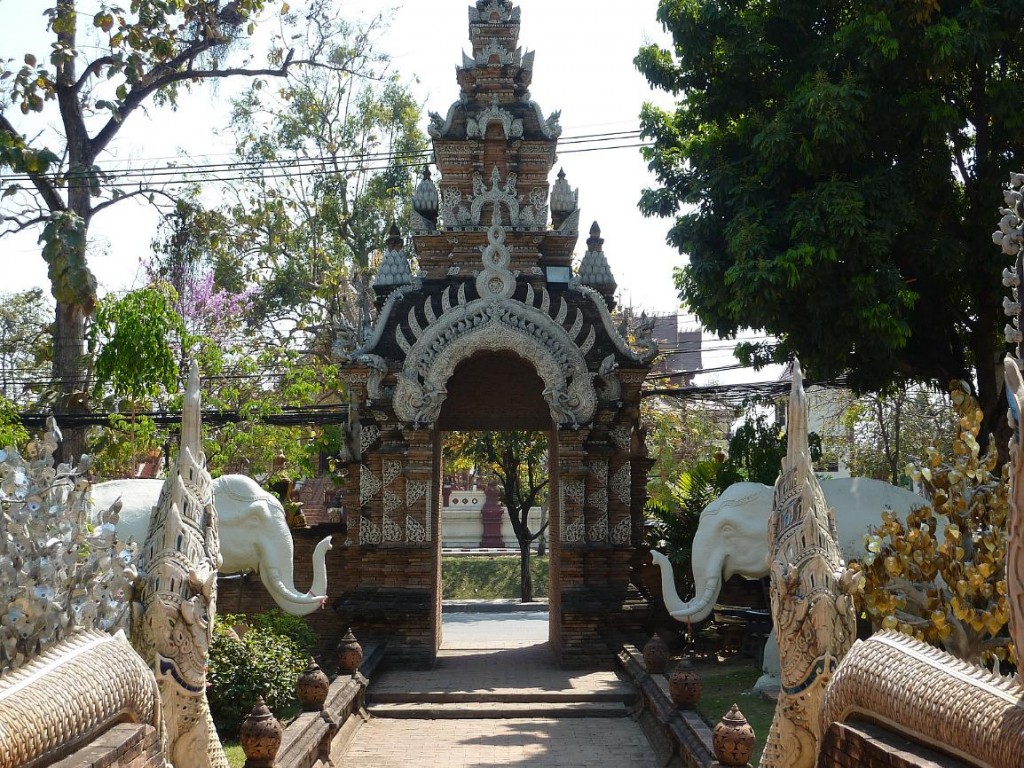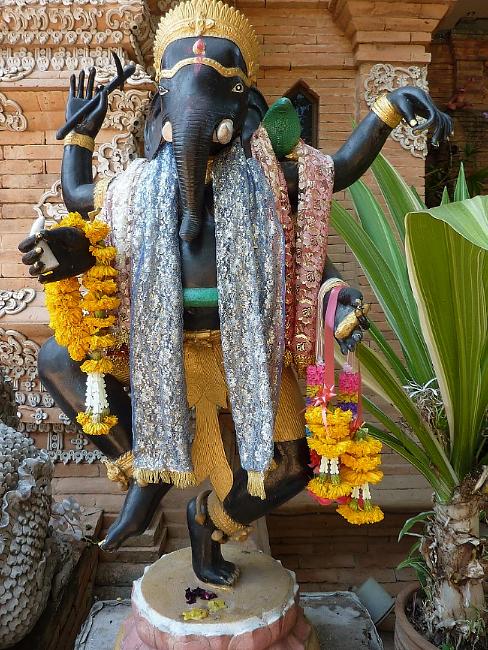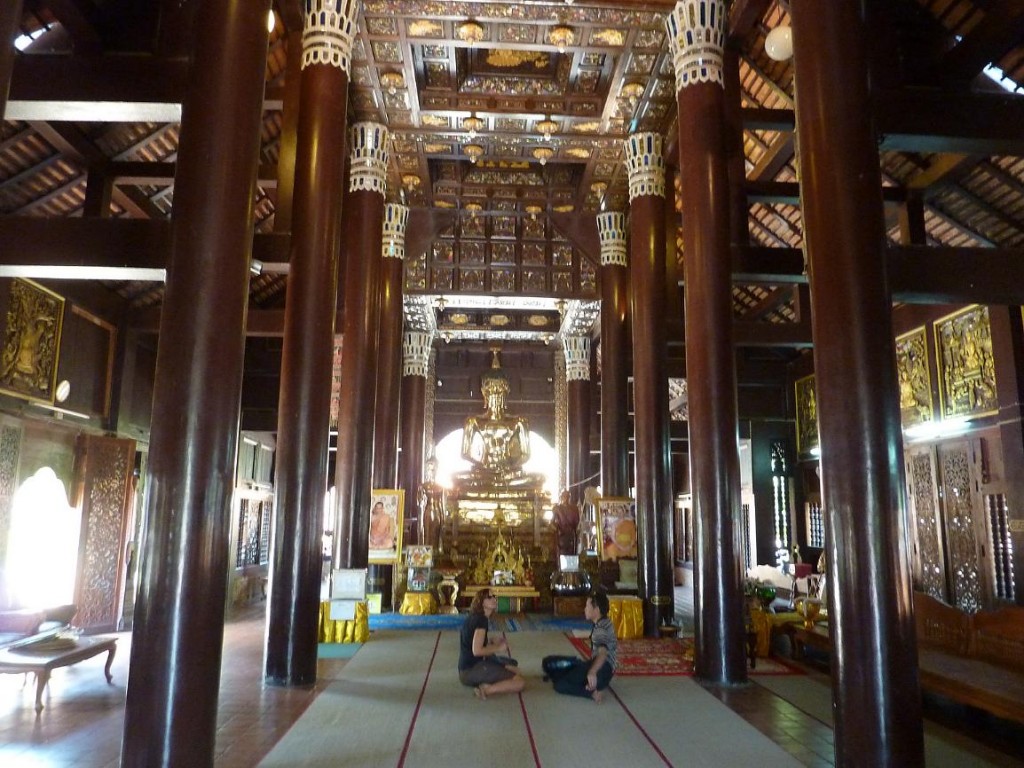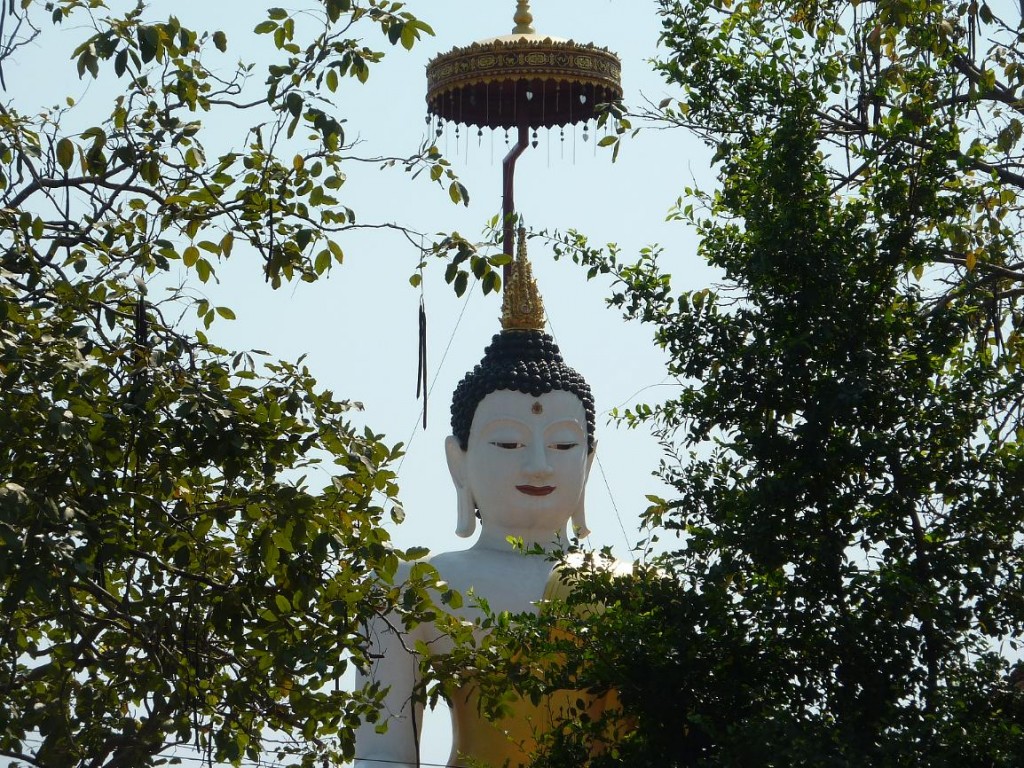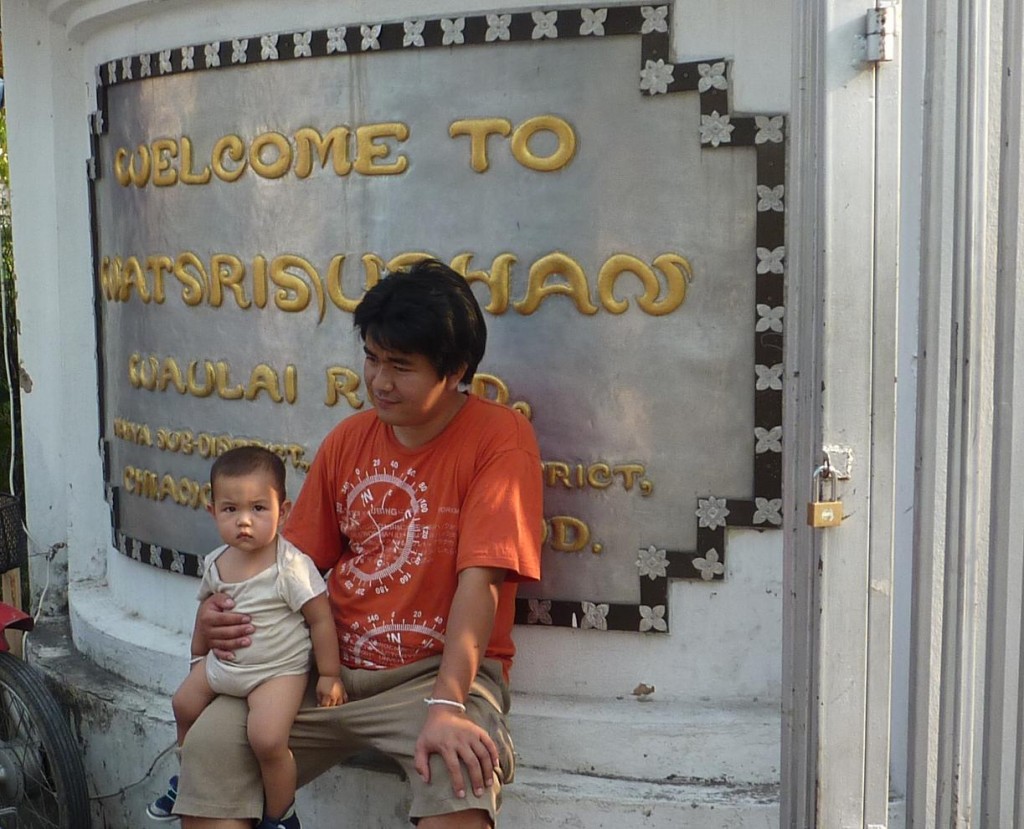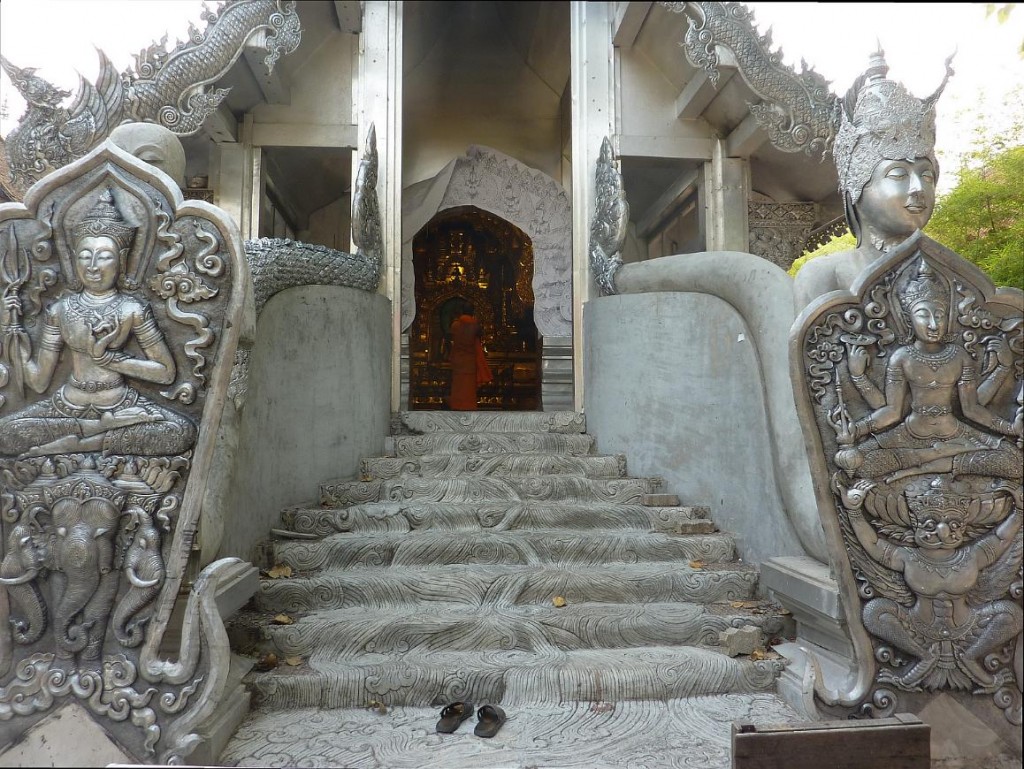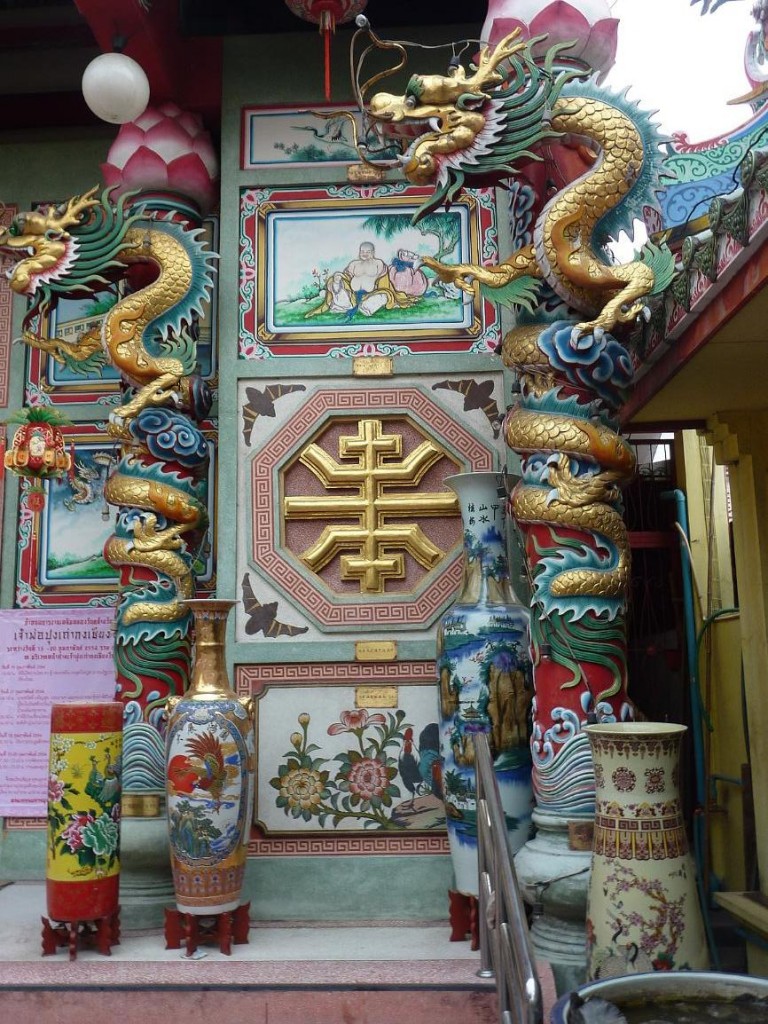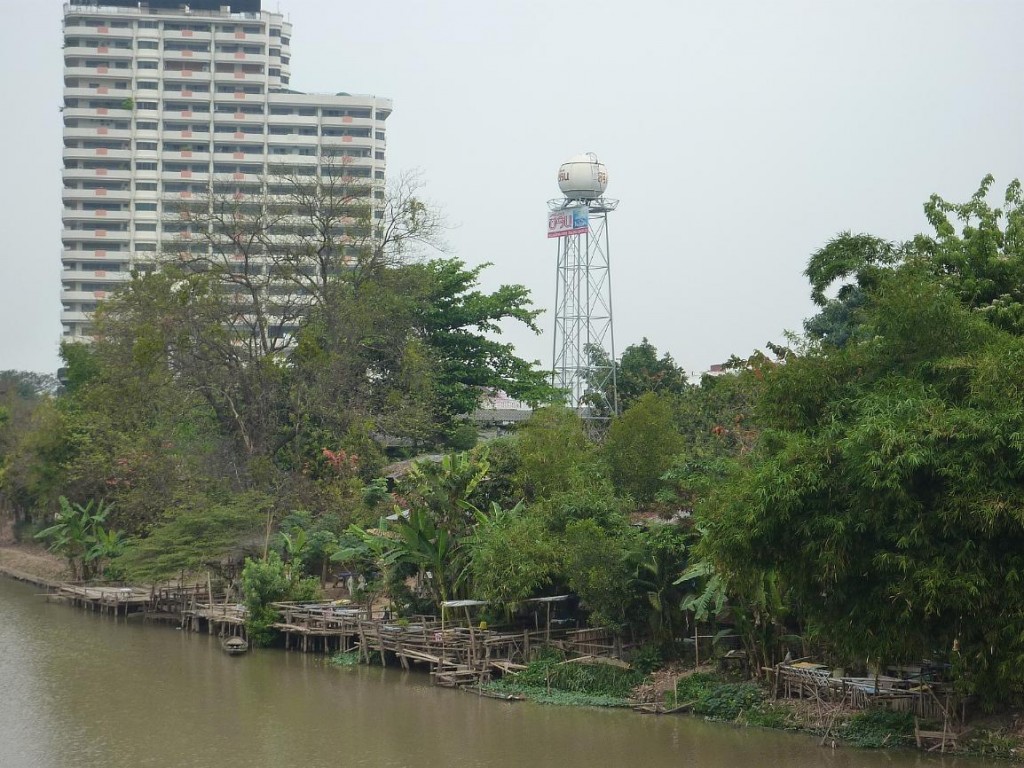Well, I did say Chiang Mai had temples. So just a few more before we leave Chiang Mai to explore the Mae Hong Son loop road that climbs and winds through the far northwest of Thailand. 
Barely outside the Old City, just past the north moat, I happened across Wat Lok Molee. The entry path is flanked by elephants and by trees hung with fluttering metal leaves – a silver leaved tree inset with gold coins and a gold leaved tree inset with silver. This wat was memorable for the beauty of its viharn, for the atmospheric chedi (a structure in which sacred objects are enshrined) at the back of the compound, and for the variety of stylized sculptures adorning the grounds. It is one of the older wats in Chiang Mai (the oldest is nearby Wat Chiang Man), and one of the most visually interesting.
a brief history of early Chiang Mai
The Lanna King Mengrai (Mangrai) began his reign in 1259 at the age of 21. From what is now northern Laos, he expanded his rule to the west, establishing Chiang Rai as the capital of his kingdom three years later. As he continued to expand the Lanna kingdom westward, he established a settlement what is now Chiang Mai, in 1292, some 30 years after founding Chiang Rai. In 1296 he began construction on the new capital. Some 720 years later, Chiang Mai remains the center of power in northern Thailand.
In the eleven chaotic years after the powerful Mengrai’s death in 1317, six kings ruled the kingdom. Stability returned with Mengrai’s grandson Kham Fu in 1328. In 1371, King Guna – the sixth king of Mengrai’s dynasty – established Wat Lok, later renamed Wat Lok Molee.
The chedi, and the viharn (now reconstructed), were constructed in 1527, thus Wat Lok Molee has been in existence now for 640 years, and the chedi has stood for 480 years. The chedi chamber contains the ashes of King Phra Muang Ket, assassinated in 1545, and of his queen who succeeded him, Queen Wisuthidhevee, who ruled until her death in 1578.
These intricate, creamy, wedding cake decorations are seen throughout much of Wat Lok Molee – on the entry gate above and on the two structures below. These embellishments were distinctive, as were the creatures adorning the low balustrades on the right hand building below which looked rather like fierce caterpillars.

Detail of the building on the left which features this extraordinary many-armed sculpture.
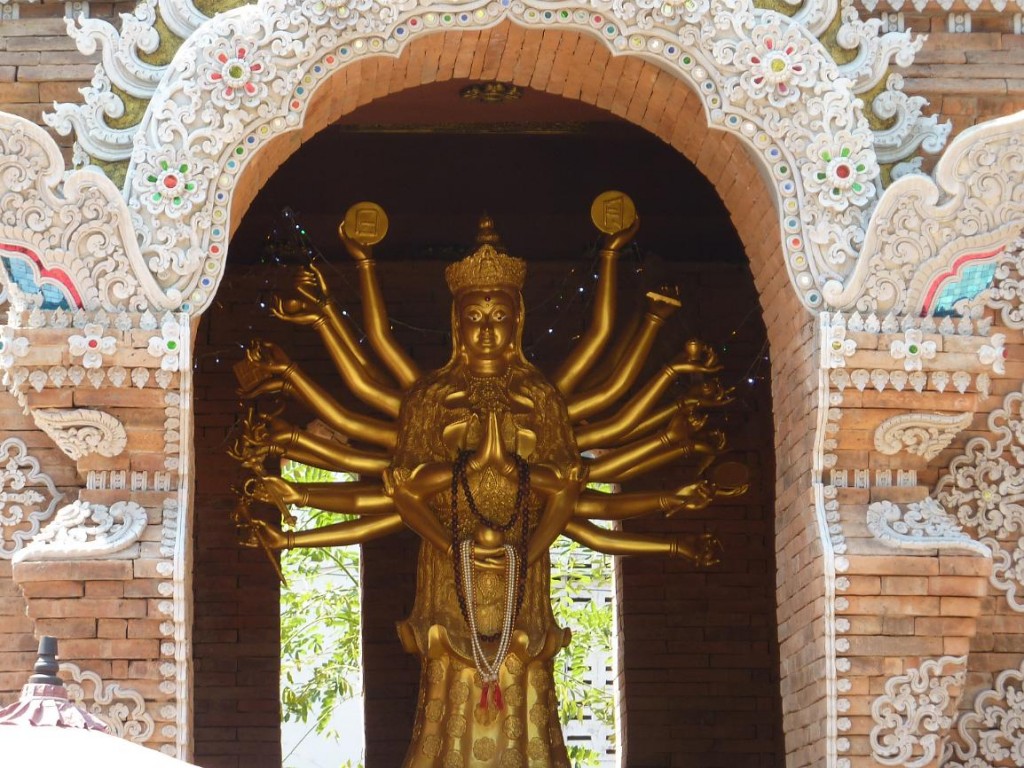
This is a representation of the Maha-Cundi, the mother of all deities, the Buddha mother. On her head is an ornate crown with an image of the Buddha. This particular representation has twenty four arms, with the hands bearing objects which symbolize the attaining of merit.
And another of the lively and colorful sculptures visible in the lower right above, Ganesha is an important deity in both Hindu and Buddhist worship.
The main viharn – elegant, soaring, serene:
Directly across the moat from Wat Lok Molee, within the walls of the Old City are two more wats – Wat Montien
and Wat Kuan Kama.
Detail from Wat Kuan Kama:
The delicate decorations on the ubosot:

Ok, here is one last Thai temple from Chiang Mai, and one which is utterly distinctive – Wat Sri Suphan is south of the Old City, in the Wualai silversmith district. The wat was first established in 1500.
From the entry gate to the ubosot, silver is featured throughout Wat Sri Suphan. The ubosot (monk’s ordination hall) has been recently reconstructed and is sheathed and roofed in a silver-nickel-aluminum alloy.
In Thailand, monks are not permitted physical contact of any kind with women. This rule extends to the presence of females in certain temple areas and structures and, sadly, the interior of this exquisite ubosot is one of those restricted places.
One last Chiang Mai temple, then I promise – no more. This one is a dramatic departure from the Thai temples I have shown you so far. Pung Tao Gong is a Chinese Buddhist temple.
From the distinctly different Buddhist temple styles, one quickly gains a sense of the cultural differences between the Thai and the Chinese.
Pung Tao Gong is located alongside the flower market on the west bank of the Ping River. The temple site was established a mere 135 years ago, dating from 1876, though the building was recently completely reconstructed (1998).
Back out on the street, one wanders next through the flower market.
This is the eclectic mix that is Chiang Mai.


